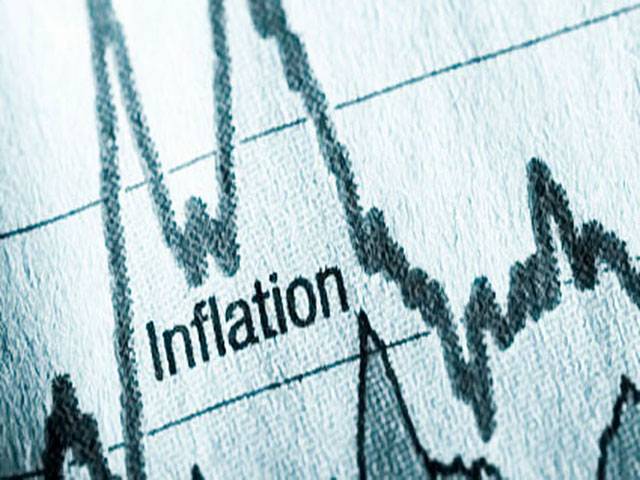ISLAMABAD - Inflation rate has slowed down to 12.4 per cent in February 2020 mainly due to reduction in prices of food commodities.
Inflation, measured through the Consumer Price Index (CPI), had touched 12 years highest level of 14.56 per cent in January this year.
However, it has reduced to 12.4 per cent in February due to reduction in prices of essential food items, according to the latest data of Pakistan Bureau of Statistics (PBS). The inflation is still in double digits. The State Bank of Pakistan had kept the policy rate unchanged at 13.25 per cent to control the soaring inflation rate. Reduction in inflation rate might pave way for reducing the interest rate in next monetary policy.
Inflation may further slowed down in next month due to reduction in oil prices. The government had reduced the prices of oil products upto Rs 7 per litre for the month of March. The government had decreased the prices of each petrol and High Speed Diesel by Rs 5 per litre.
Similarly, prices of Kerosene oil and Light Diesel oil have also reduced by Rs 7 per litre each.
The decision would go a long way in bringing down the rate of inflation because it was the primary source of transportation and agriculture in the country.
Federal Minister for Economic Affairs Hammad Azhar also tweeted about reduction in inflation rate.
“The CPI inflation rate in the country has witnessed highest deceleration i. a single month for some time. It has come down from 14.6 per cent in Jan to 12.4 per cent in Feb,” he said.
“Essential food items that decreased in Feb over Jan are; onion (8.8per cent), tomato (60.3 per cent), potato (12.9 per cent), fresh vegetables (11.5per cent) and wheat flour (5.3per cent). On non-food side major contributions for decrease came from LPG (13.5 per cent) and electricity (13.5 per cent),” he added.
According to the latest PBS data, inflation has recorded at 11.7 per cent in eight months (July to February) of the current fiscal year. The government had estimated inflation in range of 11 per cent and 13 per cent for the current fiscal year. The SBP’s projection for average inflation remained at 11 – 12 per cent for FY20.
Meanwhile, the Sensitive Price Indicator (SPI), which gauges rates of kitchen items on weekly basis, increased by 15.25 per cent. Similarly, the Wholesale Price Index (WPI) based inflation enhanced by 13.49 per cent in the period under review.
The break-up of inflation of 12.4 per cent in February 2020 showed that food and non-alcoholic beverages prices increased by 18.36 per cent. Similarly, health and education charges went up by 12.04 per cent and 7.41 per cent, respectively.
Similarly, prices of utilities (housing, water, electricity, gas and fuel) increased by 6.82 per cent in last the month.
Meanwhile, the prices of alcoholic beverages and tobacco went up by around 18.46 per cent.
Price of clothing and footwear increased by 10.12 per cent and furnishing and household equipment maintenance charges 9.95 per cent.
Recreational charges and those related to culture went up by 6.55 per cent in the period under review, while amounts charged by restaurants and hotels by 8.66 per cent in February 2019 as compared to the same month last year.
The PBS has also changed the weights assigned to various consumption items in the goods basket, and introduced a new panel of prices to be obtained from urban and rural areas. As per data, the urban CPI covers 35 cities and 356 consumer items while rural tracks 27 rural centres and 244 items.
In urban areas, the food items which saw their price increased during February 2020 included: vegetable ghee (13.15 per cent), cooking oil (10.27 per cent), sugar (8.45 per cent), mustard oil (4.25 per cent), fresh fruits (4.16 per cent), beans (3.89per cent), chicken (2.35 per cent), pulse moong (2.27 per cent), and pulse mash (1.14 per cent).
On the other hand, items that declined in urban were tomatoes (60.27 per cent), eggs (26.36 per cent), potatoes (12.91 per cent), fresh vegetables (11.48per cent), onions (8.79 per cent), wheat flour (5.29 per cent), wheat (3.52 per cent), pulse gram (2.34 per cent), and besan (2.33 per cent).
In the rural areas, items that witnessed inflation increase included sugar(8.00per cent), vegetable ghee(6.23 per cent), condiments and Spices(5.99 per cent), chicken(5.76per cent), pulse mash(5.13 per cent), pulse masoor(4.27 percent), pulse moong (3.94 percent), fresh fruits(3.56 per cent), beans(2.99 per cent), cooking oil(2.54 per cent) and mustard oil(1.63 per cent), cleaning and laundering(2.22 per cent), solid fuel (1.64 per cent) and cotton cloth (1.3 per cent).






